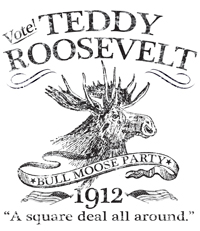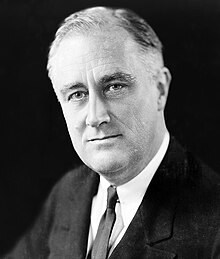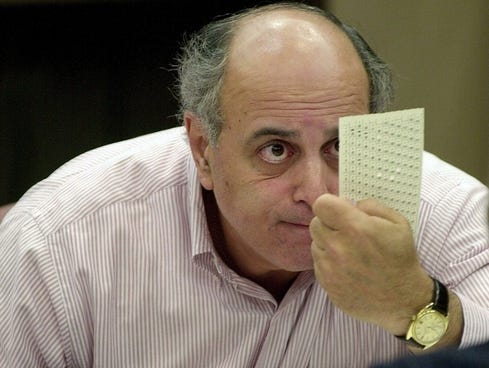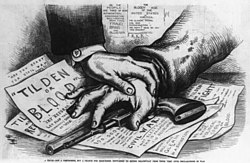 |
| Source: US News & World Report |
This may indeed be one of the more consequential elections in history, especially if the results of November 6th are as close as the polls today suggest. If that happens, the country may need to be re-educated on the Electoral College as occurred in the contentious Election of 2000. In fact, given the number of "states in play" this election, there is a very small possibility of a tie in the Electoral College. Should that rare event happen, the House of Representatives would choose the President and the Senate would choose the Vice President (Article II, Section 1 of the Constitution). That would certainly be an interesting event. Another possibility given recent polling is that one candidate could win the popular vote, while another wins the presidency through the Electoral College. We will have to wait and see what happens next week.
For more information on how the two candidates are polling compared to the Electoral College, see the Real Clear Politics Electoral Map.
For this post, I thought I would take a look back at some of the most significant elections in U.S. History:
Election of 1796 - This election marked the beginning of the two-party political system that we are accustomed to today. However, because of how the original Electoral College system worked, the election resulted in a president of one party and a vice president of another party. Federalist President John Adams and Democratic-Republican Vice President Thomas Jefferson hoped that their personal friendship could allow for a functioning government. That did not happen and led to the first real contentious election fight in American History, the Election of 1800.
 |
| The Original Electoral College Vote of 1800 (National Archives) |
Election of 1824 - After an eight year period of a one-party system, four candidates vied for the presidency in an election where some states were beginning to count the popular vote in elections. Furthermore, states were eliminating property requirements for voting ushering in the start of universal white male suffrage, known as an "era of the common man." In the final tally, Andrew Jackson emerged with more popular and electoral votes than any other candidate. However, he did not have a majority of all possible votes. By the Constitution, the election went to the House of Representatives. Under the leadership of Speaker Henry Clay who viewed Jackson as dangerous, the House chose John Quincy Adams instead. Jackson's supporters claimed a stolen election and the result was four years of misery for Adams.
Election of 1828 - Four years later, there was no electoral controversy in selecting Andrew Jackson as president. Two major developments came out of this election: (1) more "common men" now had the right to vote in an election where personal character attacks hit an all-time high and (2) the solidification of a distinct two-party political system.
Election
of 1860 - Despite close electoral contests, partisanship or campaign
controversies, every change in leadership has witnessed a peaceful
transition of power - except this one. Abraham Lincoln's election in
1860 without any southern electoral votes gave states like South
Carolina an excuse to secede from the union. That crisis led to four
years of a bloody Civil War. For more, see my related posts on the
Civil War at 150.
Election
of 1876 - After bitter years of Civil War and Reconstruction, this
election pitted Republican James Garfield against Democrat Samuel
Tilden. With a close campaign and a divided nation, the results were
unclear. Several states fielded disputed returns and without a clear
winner in the Electoral College, the Congress convened a special electoral commission and by one
vote, chose James Garfield. It is reported that a deal was struck that
in return for Garfield's election, he would remove the last remaining
troops from the South officially ending Reconstruction. With this
"Compromise of 1877," Reconstruction faded away beginning an era of the
"New South" and "Jim Crow."
Election
of 1896 - As the nineteenth century came to a close, Republican William
McKinley defeated William Jennings Bryan who ran as both a Democrat and
Populist. This is one of the more fascinating races of the nineteenth
century which served as a precursor to the types of campaigning that
would take place in the twentieth century. This was also the last
election where the agrarian vote played a major role as the United
States evolved into a mostly industrial economy.
 |
| Source: RetroCampaigns.com |
 Election
of 1932 - This election serves as the most famous example of the
economy playing the deciding role in selecting a president. In the
depths of the Great Depression, voters overwhelming turned out
Republican Herbert Hoover in favor of the eloquent Democrat from New
York, Franklin D. Roosevelt and his "New Deal." The New Deal initiated a
dramatic change in the role of the federal government and led to the
creation of dozens of government programs and regulatory agencies. These initiatives relied on planned deficit spending, an idea still debated today and resulted in the doubling of the national debt.
Though many New Deal programs were temporary, some major reforms remain
in place today - most famously, Social Security. Unfortunately, the New Deal did not resolve the Great
Depression and in fact, the economy got worse by the mid-1930s. It would take the
mobilization for World War II to finally lift the economy back to
pre-1929 levels.
Election
of 1932 - This election serves as the most famous example of the
economy playing the deciding role in selecting a president. In the
depths of the Great Depression, voters overwhelming turned out
Republican Herbert Hoover in favor of the eloquent Democrat from New
York, Franklin D. Roosevelt and his "New Deal." The New Deal initiated a
dramatic change in the role of the federal government and led to the
creation of dozens of government programs and regulatory agencies. These initiatives relied on planned deficit spending, an idea still debated today and resulted in the doubling of the national debt.
Though many New Deal programs were temporary, some major reforms remain
in place today - most famously, Social Security. Unfortunately, the New Deal did not resolve the Great
Depression and in fact, the economy got worse by the mid-1930s. It would take the
mobilization for World War II to finally lift the economy back to
pre-1929 levels.
Election
of 1940 - Though Roosevelt's popularity declined in his second term,
the overwhelming issue in this campaign was the outbreak of World War II
in Europe. As a result, voters chose to retain FDR for an
unprecedented third term instead of selecting businessman Wendell Wilkie
for the Oval Office. The possibility of a third term would be removed later by the Twenty-Second Amendment.
Election
of 1948 - In another three-candidate race, President Harry Truman
unexpectedly defeated Republican Thomas Dewey. In this race, Truman was
challenged from within his own party by Strom Thurmond who gained the
nomination of the southern States Rights, or Dixiecrat, Party. This
election proved that the party split rule does not always apply.
Journalists had expected that the split in the Democrat vote would
easily hand the election to Dewey. Some newspapers ran the headline
"Dewey defeats Truman" ahead of receiving the final results, now made
famous by the image to the left.
Election
of 1952 - In this election, television played a major role for the
first time as voters selected General Dwight Eisenhower over Democrat
Adlai Stevenson. For the influence of television in presidential
campaigns, see the Museum of the Moving Image's site, The Living Room
Candidate (www.livingroomcandidate.org). This site archives hundreds of campaign commercials from every election, 1952 to 2008 (and soon, 2012).
Election
of 1960 - Television continued to play an influential role in politics
as this election witnessed the first televised debate between Democrat
Senator John F. Kennedy and Republican Vice President Richard Nixon.
Kennedy's appeal on television boosted his image and aided in his
eventual electoral victory, though the election was very close and
is somewhat clouded with later reports of voter fraud. Kennedy is the first Catholic to be elected to the presidency.
Election
of 1968 - This election served as one of the most divisive in history. With the height of the controversial war in Vietnam, the stunning
announcement that incumbent President Lyndon Johnson would not seek a
second term and the assassinations of Martin Luther King and Robert
Kennedy, this election produced another three-way split. In a
contentious nominating convention in Chicago with violent protests
outside the convention hall, Democrats nominated Vice President Hubert
Humphrey. Republicans selected former Vice President Richard Nixon and
southern Democrats formed the American Independent Party nominating
former Alabama governor George Wallace for president. Nixon easily won
the election promising "peace with honor" in Vietnam.
Election
of 1980 - Ronald Reagan's election over Democrat Jimmy Carter in 1980
marked a change in the political landscape of the United States. While
the nation experienced what historians have labeled a "conservative
revolution," the South began the transition from a Democrat stronghold
to a mostly Republican region, at least in national elections.
Also, the politics of this era helped define the terms "conservative" and
"liberal" used today.
 |
| Source: USA Today |
To understand the Electoral College system, see my handout linked here.
Election
of 2008 - Barack Obama is the first African-American elected to the
presidency, certainly a historic moment. Whether or not he has achieved
his campaign promises will be decided by voters in this election.





One addition to my post above: the procedures for selecting President and Vice President by the United States Congress are more clearly defined by the 12th Amendment (adopted after the Election of 1800 mess): http://www.law.cornell.edu/constitution/amendmentxii
ReplyDelete